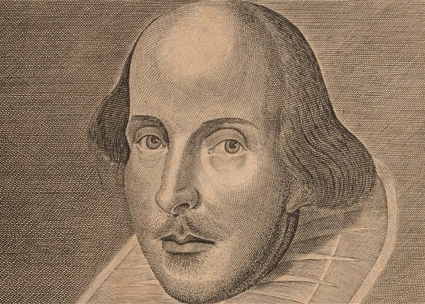"Shakespeare: Staging the World", at The British Museum.
'Shakespeare: Staging the World", at the British Museum, is a valiant attempt to encompass the most unencompassable writer who ever lived. It begins and ends with a different copy of the same book: the latter, a twentieth-century edition of the playwright’s complete works, inked with marginalia written by divers hands (more of which later); the former, the First Folio of "Mr William Shakespeares (sic) Comedies Histories, & Tragedies, Published according to the True Originall Copies" of 1623.
In between, literally bookended by these two volumes, comes a vast array of multifarious objects, images and outright curiosities selected for their Shakespearean associations: not so much a composite portrait of the writer’s world as a mind-bendingly discursive picture-puzzle inspired by the cornucopian generosity of his imagination. Wenceslaus Hollar’s panoramic print of London ("The Long View") serves as introduction: Thames teeming with rivercraft, the rubric "eel boats" inscribed under one small flotilla; streets close-clustered with the tinderbox medieval housing destined to be consumed by the Fire of London; and far to the left, in Southwark, Shakespeare’s very own "wooden O", the Globe Theatre, misidentified by the engraver as "the beere-bayting house" – a telling reminder of the popular attractions with which Shakespeare’s bloodthirsty early plays, like Titus Andronicus, were designed to compete.
From there the show departs on all kinds of quicksilver forays into the different pasts and presents that Shakespeare himself plundered. There is a headdress made from the antlers and skull of a red deer in approximately 8000BC, presumably to evoke the ancient worlds of superstition and shamanism behind the antics of Puck and the fairies in A Midsummer Night’s Dream. There is a calf’s heart stuck with pins, once used as a countercharm against spells cast by witches on livestock; and a...


